This project aims in the development of an innovative approach that offers commercial reading services.
The key innovation of the venture concerns (a) the integration of content annotation technologies derived from the digital humanities into a commercial application, (b) the design and implementation of a competitive digital reading experience, (c) in the creation of a flexible system architecture, which uses open source technologies and in this way is secured against future technological developments and (d) in the existence – at its core – of an application programming interface (BookAPI) which manages and connects all applications and their functions, offering a modern and competitive model of commercial exploitation of digital content.
All the above set the conditions for the evolution of the experimental product into a complete digital publishing solution (storage, management, commercialization, display of content), covering a real need for the market of small and medium publishers as well as the needs of the end user/reader (reading , parameterization, notes, underlines, lists, etc).
Platform
The main axis of the research project is the design and development of a platform for the distribution of coded content of literary books and scientific works and magazines in a browser environment.
The platform, taking as a point of reference the advantages and quality of reading services of special electronic book software (e-reader software), attempts to transfer them to a web browser environment where no specialized device or access software is required to read the content.
Following the latest developments, the platform supports the principles of interconnected data by providing rich, machine-readable metadata with capabilities to automate selected annotation and semantic enrichment tasks, setting the stage for future AI-enhanced digital publishing. The above facilitates the structural and semantic interoperability of digital publications with European and global Web 3.0 initiatives in the respective sectors.
The main features of the platform can be summarized as follows:
- The platform covers the full spectrum of a publisher’s digital needs (storage, management, commercialization, content display),
- The platform covers the needs of a reader (reading, parameterization, notes, underlining)
- The platform is guaranteed in terms of future technological developments as it is not based on a predefined technology but on several different open source technologies which are controlled by a central API creating the appropriate conditions for the continuous evolution of the platform by adding new functions or integrating third party services.
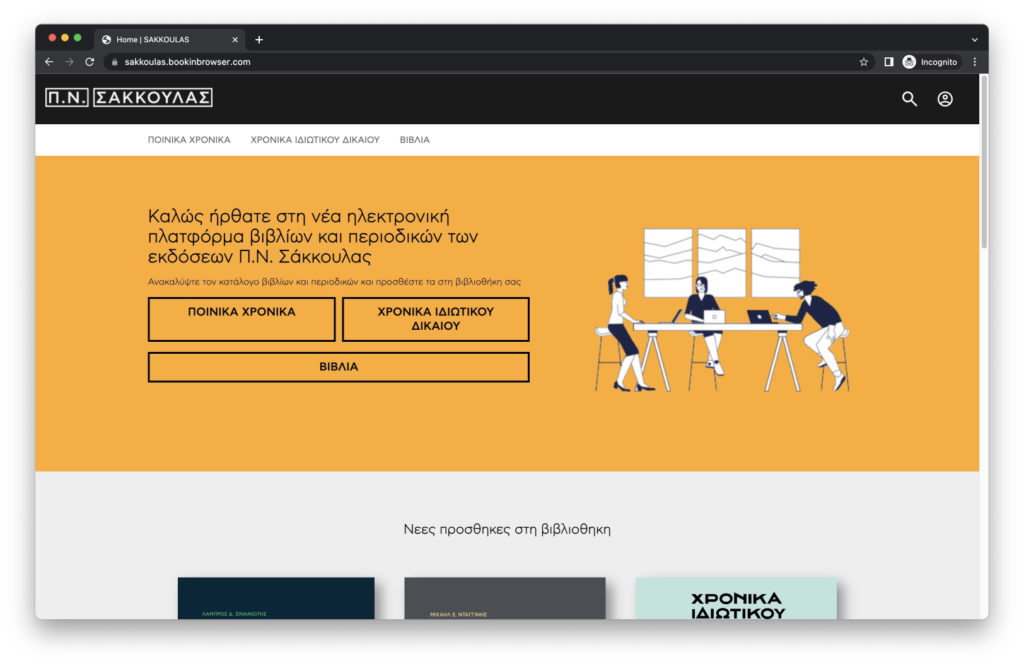
Κεντρική σελίδα εκδόσεων Π.Ν. Σάκκουλας
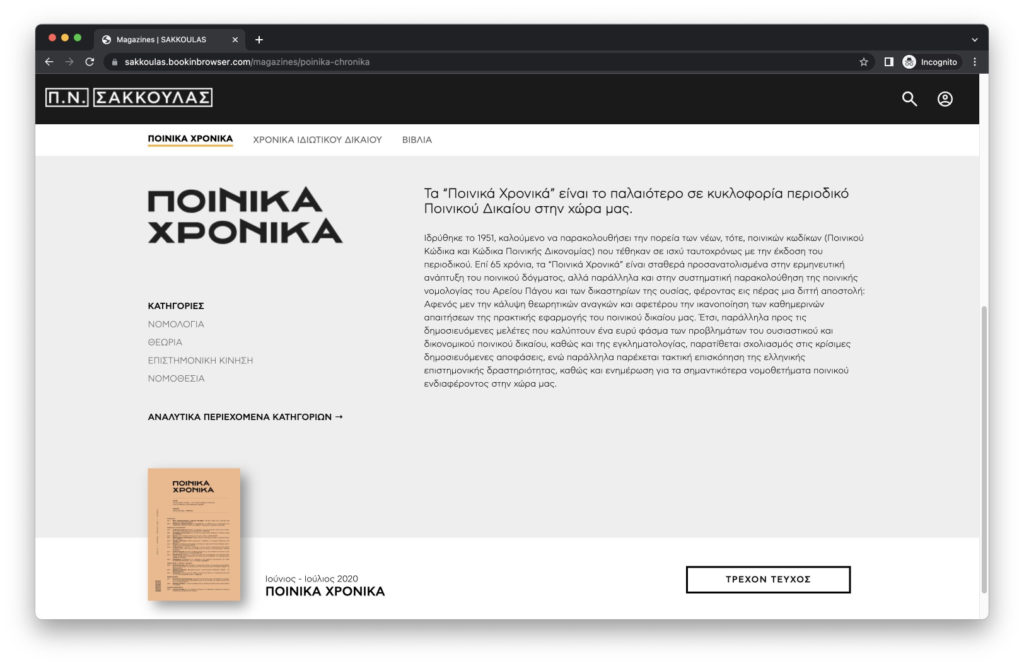
Presentation page of P.N. Sakkoulas magazine title “Poinika Chronika”
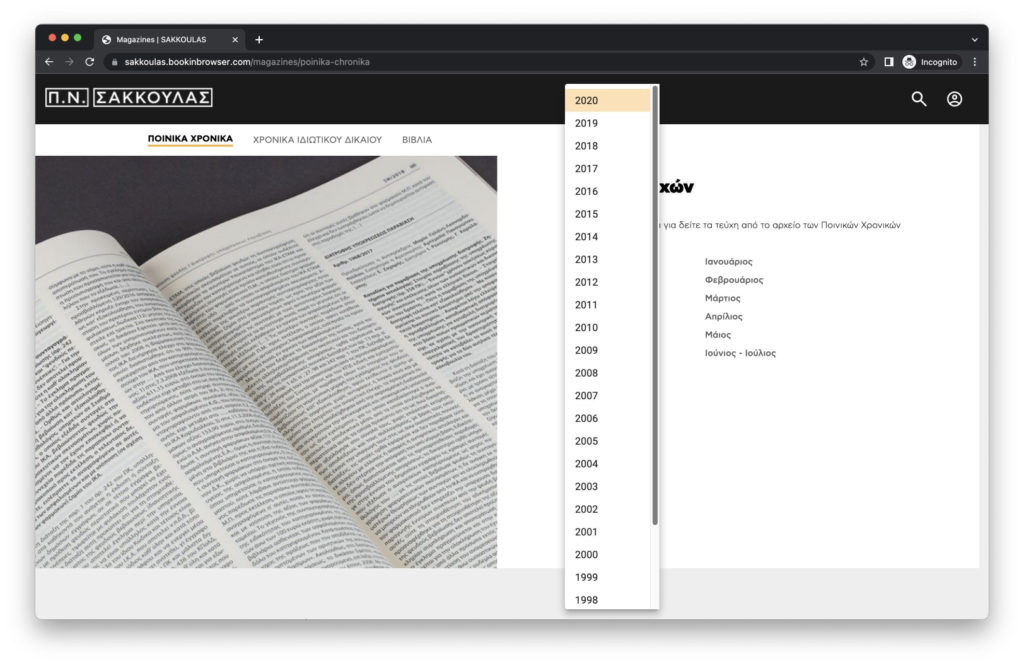
Index of issues of magazine “Poinika Chronika”
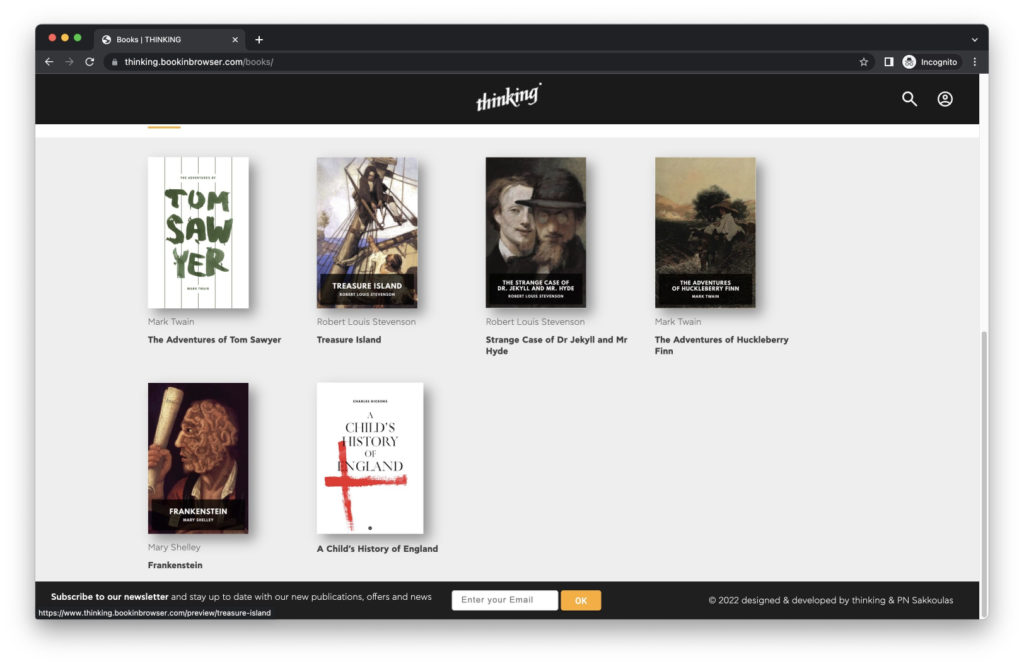
Book titles from thinking publications
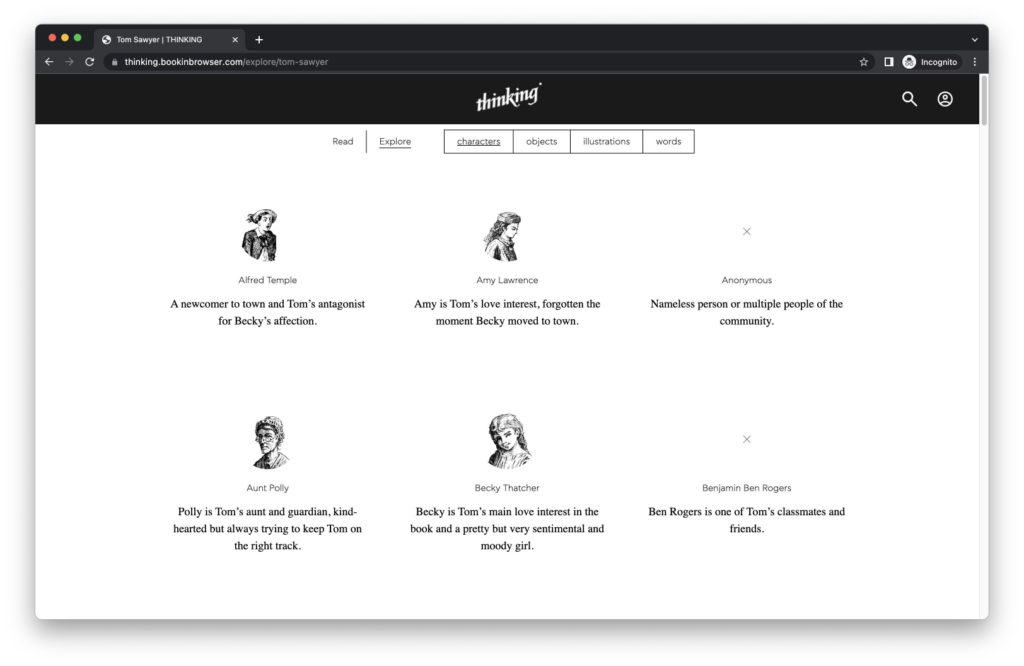
Explore section, book characters list page
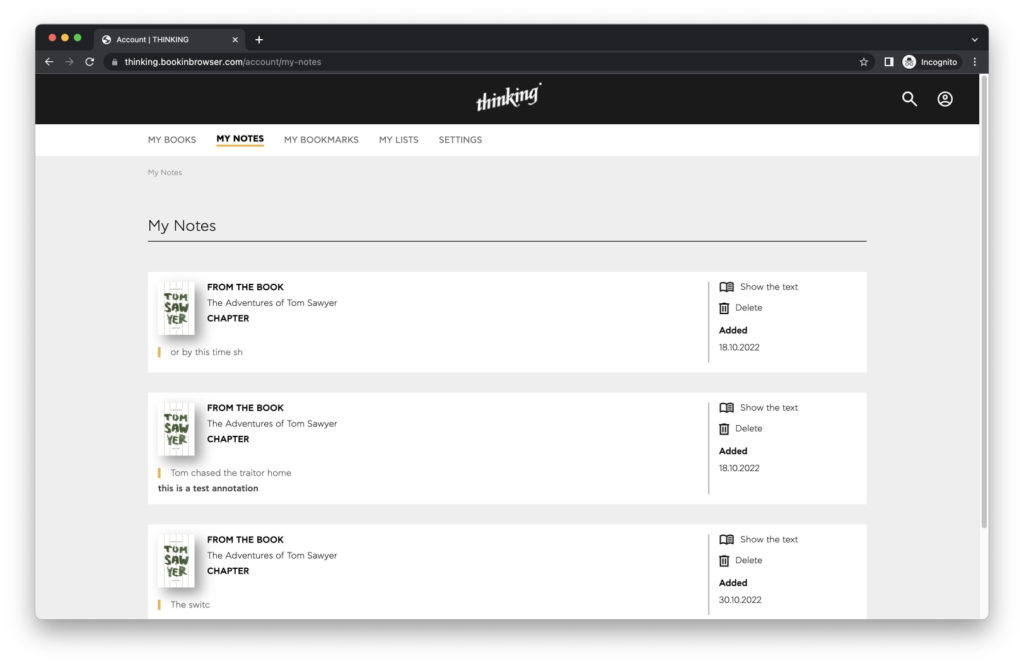
Dashboard: overview of user notes and annotations
The flexibility of the platform is achieved through BookAPI, an application programming interface implemented in this project that allows us to manage all aspects of publishing products (sale/disposal, reading) and end-user services (reading interface, reading tools , Account Management).
The prospect of exploiting this know-how concerns new, digital editions of fictional prose, poetry, legal books and magazines, as well as the development of a B2B product solution for making the overall technical results of the project available as SaaS to other publishing houses. We believe that within the framework of this project we have laid the appropriate foundations for the experimental development to form the basis for a competitive commercial product that provides modern and innovative solutions to the publishing market.
Reading Experience
The reading experience is one of the most important features of the experimental reading platform.
We approach the reading experience from two perspectives:
From the manufacturer/publisher perspective, the design of the reading experience is distinguished at the following levels:
- Annotation (Encode), where the text is enriched with structural and semantic annotation, including metadata, headings, adjuncts, characters, objects, relationships, scenes, references to time and space, linguistic, factual and interpretive elements
- Read, which offers a stylish and functional typographic and design reading environment, along with a toolkit for customizing the look and enhancing reading, such as navigation and editor’s notes based on the work done in the markup, but also with the ability to add user content in the form of bookmarks and notes
- Exploration (Play), where, in addition to the main text, new ways of approaching the text are given with original routes to exploit highlighted elements. This feature is now appropriate and implemented for fiction texts.
From the point of view of the user-reader, the design of the reading experience is distinguished at the following levels:
- Reading (Read), which includes the technical design options, such as typography, colors, graphics, navigation, design compatibility with all screens regardless of dimensions
- Learn, which includes information accessible from the reading environment and enhances reading, such as linguistic, factual and interpretive notes, as well as a user toolkit
- Explore, where, extratextually but in a manner accessible from the navigation, all the content resulting from the annotation but not offered embedded in the text is collected, such as character maps, character cards, illustration index, item index, chronologies, site maps , specialized searches in the base (queries). This feature is now appropriate and implemented for fiction texts.
The philosophy of the project is developed around the following pillars:

